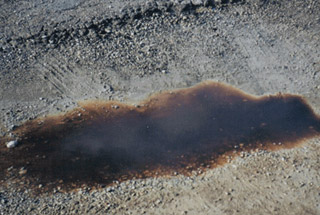The purpose of a Phase I Environmental Site Assessment (Phase I ESA) is to identify actual and potential site contamination based on an examination of past and current practices and activities. A Phase I ESA consists of a review of all historical and existing information on the subject property, including a site inspection and interviews. No laboratory testing, sample gathering, intrusive investigation or physical analysis is usually undertaken. Standard Z768-01 of the Canadian Standard Association (CSA) is Canada’s basic benchmark for a Phase I Environmental Site Assessments. The four principal components of a phase I ESA are;
- a review of available current and historical records,
- a site visit,
- interviews; and
- evaluation of information and reporting.
Some basic tasks that our company perform according to Phase I of EI are:
- Performing an on-site visit to view the current condition of the place.
- Testing the degree of affect to the subject property by the foreign hazardous substance,
- Evaluating the risk to neighbouring properties from the subject property.
- Examining the drainage pattern and the problems associated with it.
- Checking the municipal files to verify previous reported contaminations or regarding concerns.
Phase I Environmental Site Assessments (ESAs):
A Phase I Environmental Site Assessment (ESA) is a non-intrusive investigation into a property’s current and historical environmental liabilities including the identification of actual or potential areas of environmental concern. These assessments identify recognized environmental conditions that could impact the value of the property.
Phase II Environmental Site Assessments (ESAs):
A Phase II environnemental site assessement (Phase II ESA), also known as a site characterization study, provides intrusive sampling to confirm the determination made from the Phase I findings. The purpose of a phase II ESA is to confirm the presence or absence of contamination and characterize the substances of concern at a given site. The confirmation could either accept or reject identification of potential contamination and therefore environmental liability. Phase II Environmental Site Assessment is an “intrusive” investigation which collects original samples of soil, groundwater or building materials to analyze for quantitative values of various contaminants. This investigation is normally undertaken when a Phase I ESA determines a likelihood of site contamination. In the event that a recognized environmental condition is revealed from a Phase I Environmental Assessment, a Phase II ESA can be ordered.
Phase III – Remedial Action
A Phases III can be undertaken by both, the ower or the purchaser, depending on the purchase agreement conditions. A Phase III start with the preparation of a Remedial Action Plan (RAP) based on the information derived from Phases I and II, then the site supervision and monitoring during remediation of the contamination.


